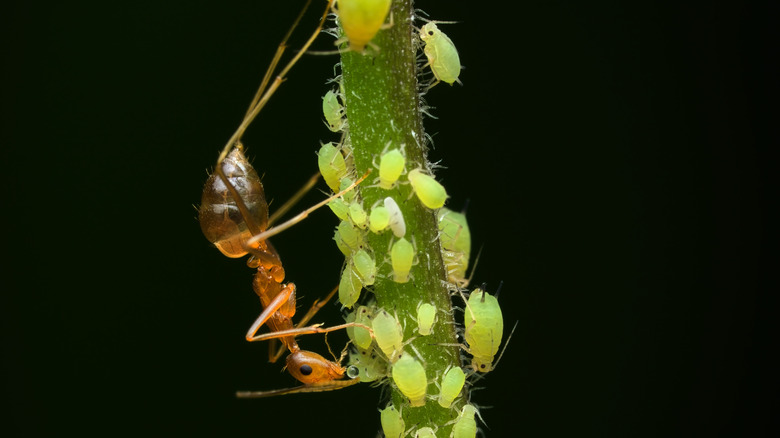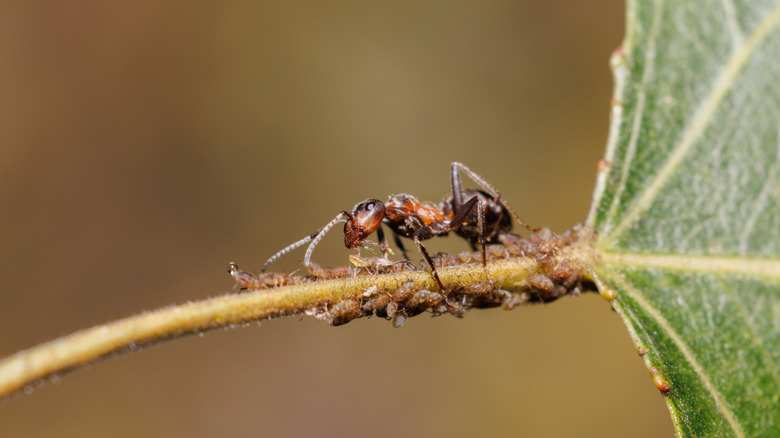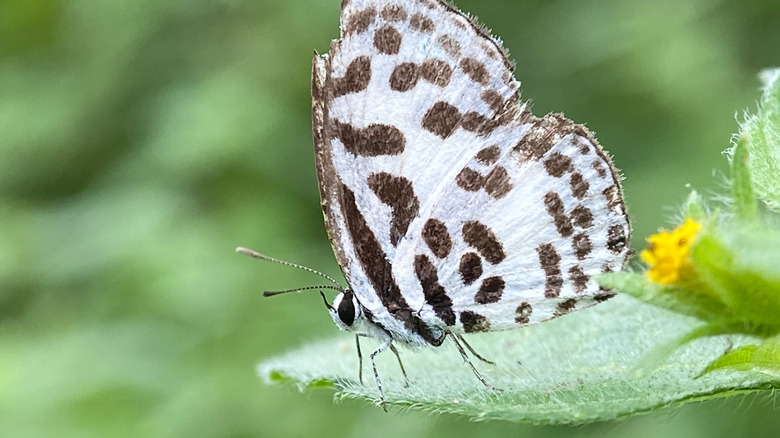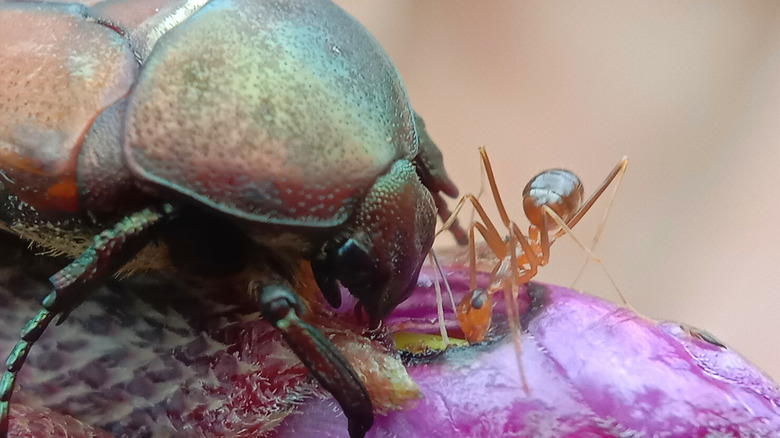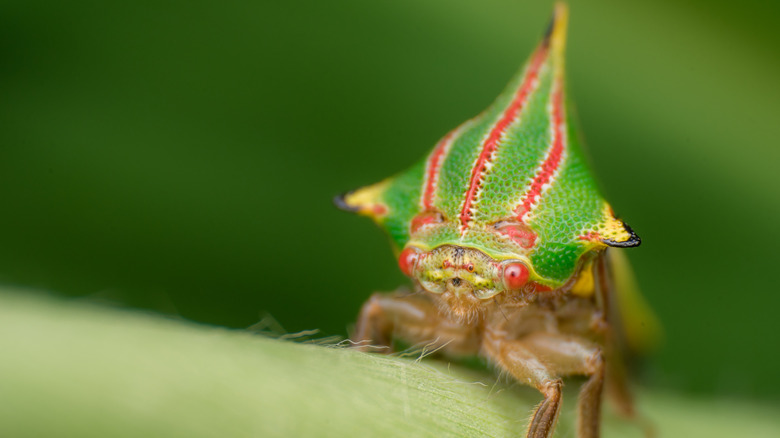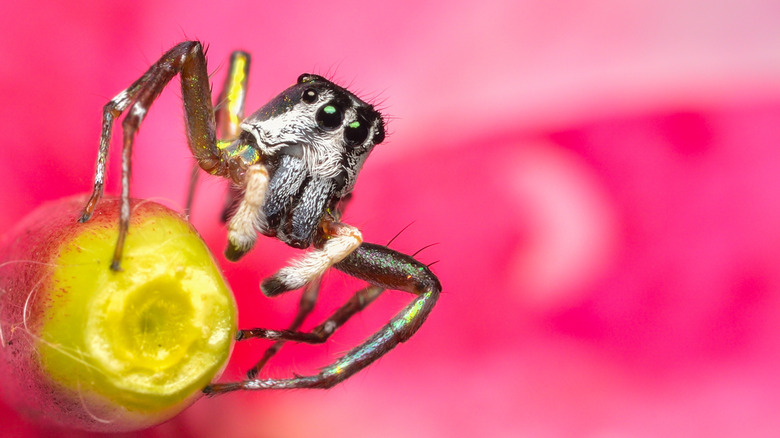4 Insects That Have A Symbiotic Relationship With Ants
Symbiotic relationships — mutually beneficial close partnerships between species — are among the most fascinating dynamics in the natural world. These collaborations can range from the nourishing ties between plants and pollinators (check out our guide on how flowers and bees help each other) to more complex interdependencies like those between certain fungi and tree species.
The insect world brims with such partnerships, and ants, with their industrious and social nature, are at the center of many. Numerous insect species have evolved strategies to integrate into ant colonies, exchanging services like food for the benefit of living within the colony's sphere of influence.
Species of aphids, caterpillars, and beetles have all adapted in remarkable ways to coexist with ants. Recent research has even revealed that microbial symbionts — microorganisms that form beneficial relationships with their hosts — play a key role in strengthening these bonds. Here, we look at four insects (and one crawly outlier) that have evolved symbiotic relationships with ants and how these connections benefit both parties.
Aphids
Several species of ants have well-studied relationships with aphids, the tiny sap-sucking insects that are the source of much consternation to farmers and gardeners for the damage they can cause to plants. In fact, Argentine ants, one of the invasive species wreaking havoc in California, are known to have just such a symbiotic relationship with aphids, which is one of the reasons they have become so problematic in that state. When aphids feed, they secrete honeydew, a sugar-rich byproduct of their digestive process that is highly valuable for ant diets. In return for this food source, ants provide the aphids with protection from predators, creating a mutually beneficial relationship that has intrigued scientists for decades.
This partnership showcases remarkable levels of cooperation. Ants will actively shepherd aphids, moving them to new and healthy plants to ensure a steady supply of sap and honeydew. The ants will even "herd" aphids to the largest and healthiest parts of a plant, or coax them under its leaves to shelter them from adverse weather and keep them out of the sight of predators. During cold weather or at night, the ants may bring the aphids along with them into their underground colony for protection.
So established is this symbiotic relationship that it is some ant workers' sole job to care for the colony's aphid partners. Remarkably, this partnership allows ants to effectively "milk" the aphids for their honeydew by prodding them with their antennae, which causes them to secret more of the substance.
Caterpillars
The symbiotic relationship between ants and caterpillars, particularly those of the Lycaenidae butterfly family, is another intriguing example of mutualism in the natural world. Certain caterpillars have evolved to secrete sugar nectar from a specialized gland called the dorsal nectary organ, which ants eagerly consume. Similarly to the ant-aphid behavioral contract, the ants act as fierce bodyguards from potential predators in return for the food source.
Fascinatingly, scientists suspect that these caterpillars also produce a chemical signal that essentially tells the ants to calm down and view them as friendly rather than as foe. There is also evidence of these caterpillars deliberately increasing the production of their sugar nectar in times of crisis to incentivize the ants to stick around, even producing minor clicking or squeaking sounds that act as beacons to the ants. Beyond protection, ants will also groom the caterpillars of harmful pests.
Researchers have further shown that the larval and pupal forms of the butterfly species Maculinea rebeli are able to mimic red ants so well that the ants treated them as if they were queens of their own colony, even going so far as to sacrifice their lives for their protection. Perhaps most surprisingly, some caterpillars have been found wandering freely deep in the nests of ant species known for their aggressive nature, suggesting they act as a kind of symbiotic and social parasite within the colony.
Beetles
Beetles represent some of the most ingenious and diverse ant symbionts, with numerous species evolving complex relationships that range from mutualism to outright parasitism (yes, parasitism is a type of symbiotic relationship). Myrmecophilous species of beetles — those that associate with and benefit from ants — often rely on mimicry, deception, and chemical communication to integrate into ant colonies. Some beetles, like those in the genus Paussus, even exhibit significant physical adaptations to make them appear to the ants as members of their own colony, allowing them to utilize colony resources and reproduce freely.
Research has also revealed that the beetle species Nymphister kronaueri, native to the rainforests of Costa Rica, hitchhikes on the backs of army ants. The beetles attach themselves to the ants' thorax, and so closely resemble their hosts' stomachs in appearance that it's nearly impossible to distinguish them from the normal ant body. Army ants are known to live nomadic lifestyles, thus granting the freeriding beetles regular access to fresh food sources.
Even more fascinating is research showing that the gut biomes of myrmecophilous (ant-loving) beetles are actually adapted to their ant environments, meaning they likely aid the beetle species in producing chemical compounds that mimic ant pheromones. These findings suggest that these beetle-ant relationships, some of which go back hundreds of millions of years, go beyond behavioral or phenotypical changes to affect even these species' microbiomes.
Treehoppers
Treehoppers are bizarre-looking winged insects that, like aphids, feed by sucking sap from plants. They also produce sugary honeydew, which ants harvest as a nutrient-rich food source, especially when other types of food aren't readily available. The ants stick around and protect the treehoppers from predators, but they also provide a secondary function of preventing the buildup of excess honeydew, which can result in fungal growth and reduce the insects' mobility.
When under attack — usually by predatory ladybirds — treehoppers will emit a vibrational alarm call that ants are drawn to, increasing the chances of the insects being protected from the threat. Research has shown that during these alarms, the probability of ant-ladybird altercations increased by more than double, illustrating the effectiveness of the treehoppers' symbiotic security system.
One of the benefits for treehoppers in this mutualistic relationship is childrearing. Treehopper mothers in broods without an ant population present will stick close to their offspring to ensure their safety, but those with ants nearby will go off and establish another clutch (a group of eggs). In this way, the symbiotic relationship alters even reproductive behavior amongst the insects.
Honorable mention: Spiders
While spiders aren't insects, they, too, form symbiotic relationships with ants. And, given the fact that spiders often prey on ants, this is particularly remarkable. However, researchers in Panama have observed two species of orb-weaver spiders that have made their homes on acacia plants that are defended by ant colonies. The interaction forms a three-way partnership: The ants protect the acacia plant from potential hungry foes in exchange for the sugars and proteins in the plant's leaves while also scaring off predators that would hunt the spiders, while the orb-weaver spiders, small enough to stay out of the way of the ants during the day, emerge at night and deploy their webby traps, catching pests that might harm the plant.
Other spider species have developed morphological adaptations to look nearly identical to the ant colonies they interact with. Plenty more have been discovered living directly in ant colonies themselves, granting them access to a stable environment and reliable food source. Some species are so integrated with colony life that they fail to adapt to life outside it if removed, underscoring the degree to which symbiotic relationships in the wild can affect an animal's existence and ecological identity. If you're interested in learning more about the complex and compelling world of insects, check out our breakdown of what happened to the murder hornets in Washington State.
